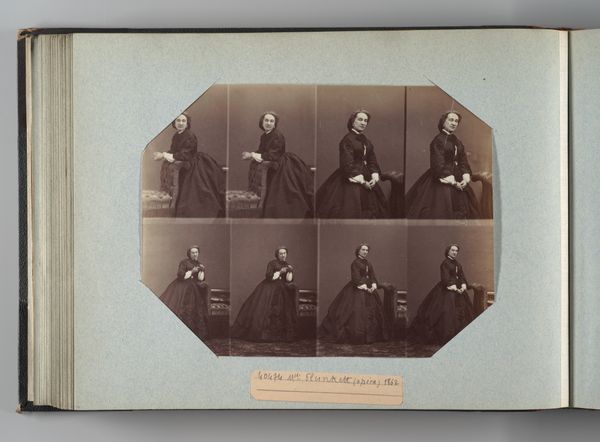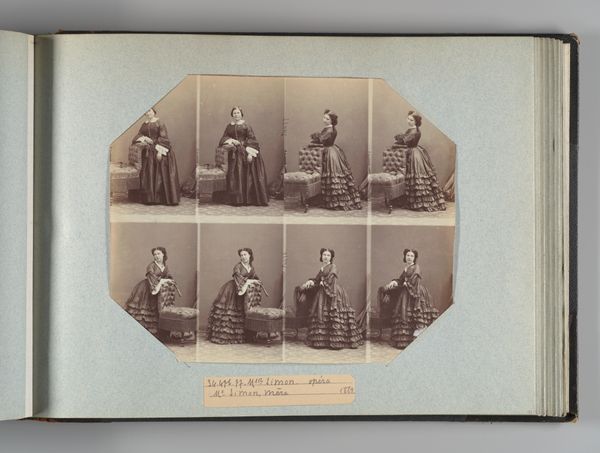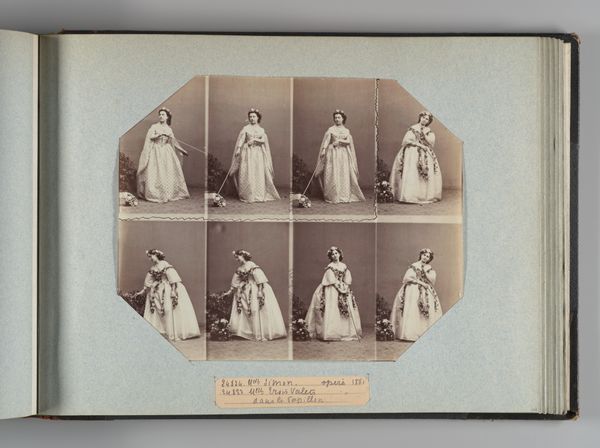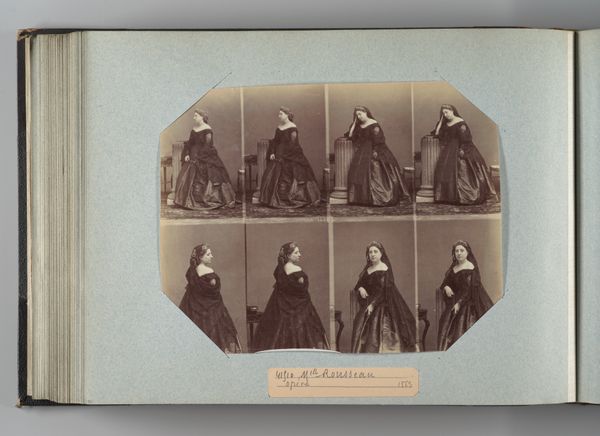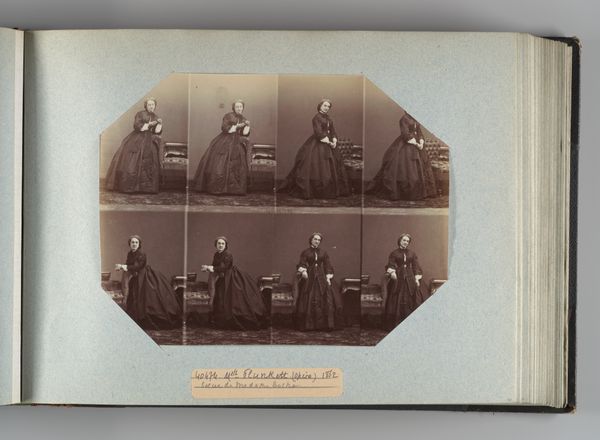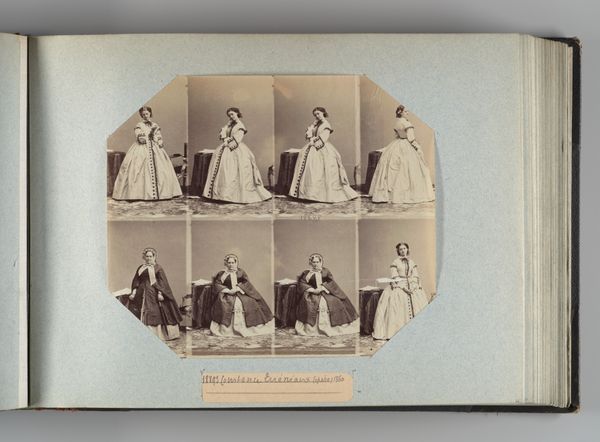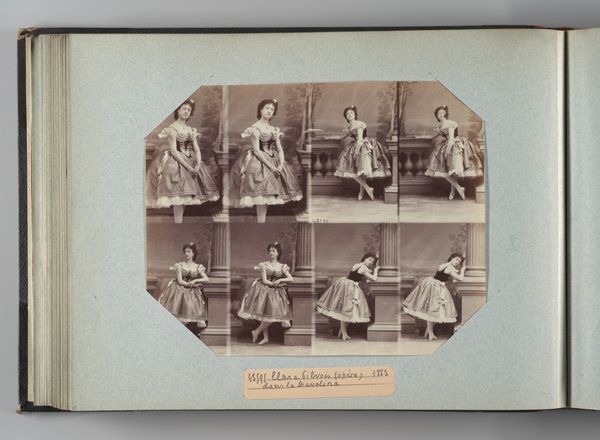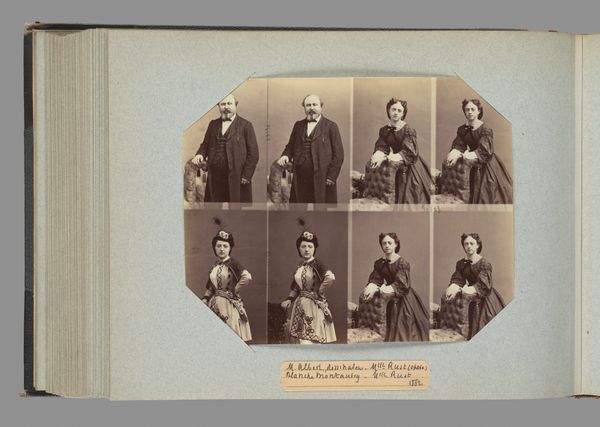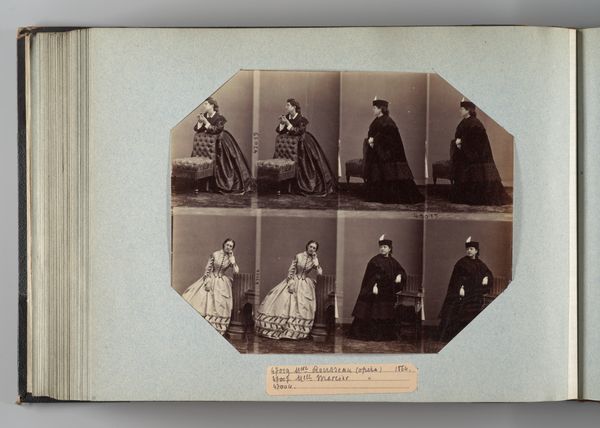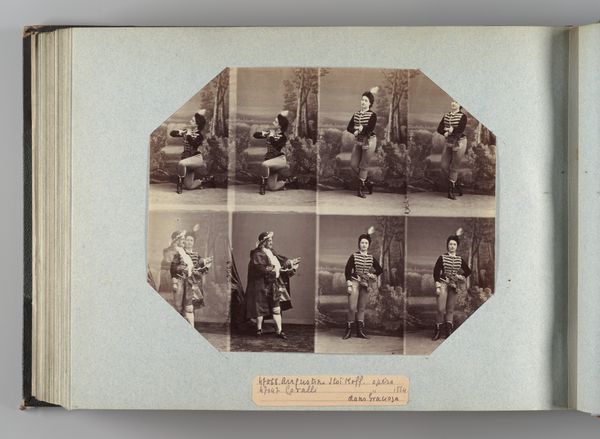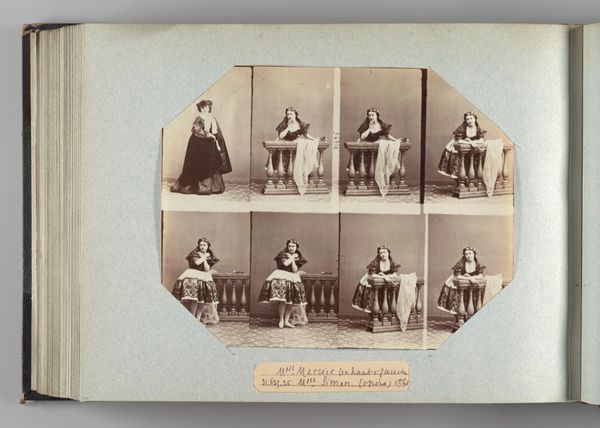
photography, albumen-print
#
portrait
#
photography
#
genre-painting
#
albumen-print
Dimensions: Image: 7 3/8 × 9 1/4 in. (18.8 × 23.5 cm) Album page: 10 3/8 × 13 3/4 in. (26.3 × 35 cm)
Copyright: Public Domain
Editor: This albumen print by André-Adolphe-Eugène Disdéri, from 1864, titled "Mlle Emma Piron; Mlle Robert," features eight separate portraits of the same two women in formal attire. It's striking how similar each image is, yet also how the subjects' subtle variations in pose and expression seem to resist the uniformity. How do you interpret this work? Curator: This piece compels us to consider the constrained roles available to women of this era. The sameness you noticed, the repetition...it speaks volumes. Think about it: the clothing, the poses – all adhere to strict societal expectations. Each portrait is almost identical, and perhaps this points to a pressure felt by women to conform. Do you think the multiple exposures enhance this reading? Editor: I do. The repetition underscores the limited agency they seem to possess, almost like characters performing the same script over and over. Were they really expected to conform so strictly? Curator: Absolutely. This was a period of intense social codification, particularly concerning women’s roles in society. Photography, ironically, both captured and perpetuated these ideals. Yet, I want you to look closer. Do you see anything in their eyes or postures that suggests resistance, or perhaps even a subversive message? Editor: I see your point. There's something in their gazes, a hint of individuality peeking through the conformity. It's like they are silently acknowledging the artificiality of it all. Curator: Precisely. Disdéri, intentional or not, captured both the surface-level expectations and the underlying complexities of female identity. Editor: That's fascinating. I hadn't considered how the piece could act as both a mirror of societal constraints and a site of quiet defiance. Curator: Looking at art this way, considering the complex interplay of social forces, reveals so much more than what is immediately apparent. Editor: I agree! Analyzing art through that lens helps me understand its cultural impact so much better.
Comments
No comments
Be the first to comment and join the conversation on the ultimate creative platform.


